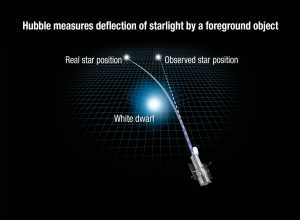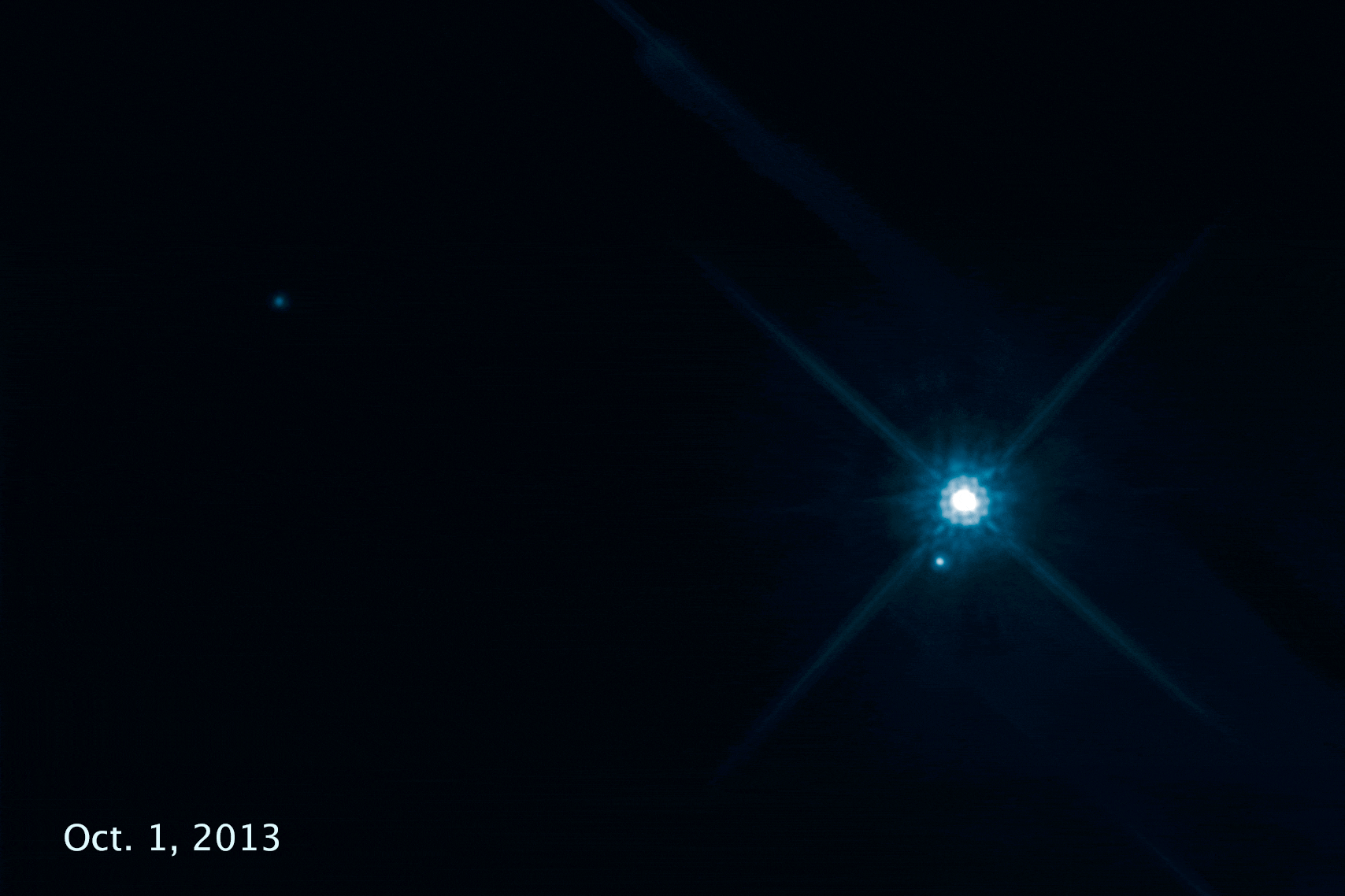CRAQ’s researcher Pierre Bergeron is part of the team of astronomers that developed a new use for a century-old relativity experiment to measure a white dwarf’s mass
 An international team of astronomers, including Professor Pierre Bergeron from the Center for Research in Astrophysics of Quebec and Université de Montréal, used the sharp vision of NASA’s Hubble Space Telescope to repeat a century-old test of Einstein’s general theory of relativity. The team of astronomers measured the mass of a white dwarf, the burned-out remnant of a normal star, by seeing how much it deflects the light from a background star.
An international team of astronomers, including Professor Pierre Bergeron from the Center for Research in Astrophysics of Quebec and Université de Montréal, used the sharp vision of NASA’s Hubble Space Telescope to repeat a century-old test of Einstein’s general theory of relativity. The team of astronomers measured the mass of a white dwarf, the burned-out remnant of a normal star, by seeing how much it deflects the light from a background star.
Credits: NASA & STScI
This observation represents the first time Hubble has witnessed this type of effect created by a star. The data provide a solid estimate of the white dwarf’s mass and yield insights into the structure and composition of the burned-out star.
First proposed in 1915, Einstein’s general relativity theory describes how massive objects warp space, which we feel as gravity. The theory was experimentally verified four years later when a team led by British astronomer Sir Arthur Eddington measured how much the sun’s gravity deflected the image of a background star as its light grazed the sun during a solar eclipse, an effect called gravitational microlensing.
Astronomers can use this effect to see magnified images of distant galaxies or, at closer range, to measure tiny shifts in a star’s apparent position on the sky. Researchers had to wait a century, however, to build telescopes powerful enough to detect this gravitational warping phenomenon caused by a star outside our solar system. The amount of deflection is so small only the sharpness of Hubble could measure it.
The nearby white dwarf star Stein 2051B was observed as it passed in front of a background star. During the close alignment, the white dwarf’s gravity bent the light from the distant star, making it appear offset by about 2 milliarcseconds from its actual position. The measured deviation is about a 1,000 times smaller than the measurement made by Eddington in his 1919 experiment. It is so small that it is equivalent to observing an ant crawl across the surface of a quarter from about 2,500 kilometers away.
Using the deflection measurement, the Hubble astronomers calculated that the white dwarf’s mass is roughly 68 percent of the sun’s mass. This result matches theoretical predictions.
The technique opens a window on a new method to determine a star’s mass. Normally, if a star has a companion, astronomers can determine its mass by measuring the double-star system’s orbital motion. Although Stein 2051B has a companion, a bright red dwarf, astronomers cannot accurately measure its mass because the stars are too far apart. The stars are at least 5 billion miles apart – almost twice Pluto’s present distance from the sun.
The Hubble analysis also helped the astronomers to independently verify the theory of how a white dwarf’s radius is determined by its mass, an idea first proposed in 1935 by Indian American astronomer Subrahmanyan Chandrasekhar.
The researchers plan to use Hubble to conduct a similar microlensing study with Proxima Centauri, our solar system’s closest stellar neighbor.
The team’s result will appear in the June 9 edition of the journal Science. http://science.sciencemag.org/content/sci/early/2017/06/06/science.aal2879.full.pdf
About Stein 20151B
Stein 2051B is named for its discoverer, Dutch Roman Catholic priest and astronomer Johan Stein. It resides 17 light-years from Earth and is estimated to be about 2.7 billion years old. The background star is about 5,000 light-years away.
Contact:
Professor Pierre Bergeron
Center for Research in Astrophysics of Quebec
Université de Montréal
Phone : (514) 343-6678
bergeron@astro.umontreal.ca
Source:
Robert Lamontagne
Public outreach
Center for Research in Astrophysics of Quebec
Université de Montréal
Phone : (514) 343-6111 x3195
lamont@astro.umontreal.ca
 Groupe d\’astrophysique de l\’Université de Montréal
Groupe d\’astrophysique de l\’Université de Montréal